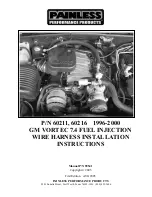
Brake fluid can pollute the environment. Any spilt service fluids must be cleaned up and
disposed of properly.
12-volt vehicle battery
Introduction
This chapter contains information on the followingsubjects:
⇒
Checking the electrolyte level of the 12-volt vehicle battery
⇒
Charging, replacing, disconnecting and connecting the 12-volt vehicle battery
⇒
Troubleshooting
The 12-volt vehicle battery is a component of the electrical system and serves to supply power in
the vehicle.
You should only carry out work on the electrical system if you know exactly how to perform the
required tasks, are aware of the general safety procedures and have access to the correct
equipment, service fluids and suitable tools. Failing to carry out work correctly can cause serious
injuries
⇒
. All work should be carried out by a qualified workshop. Volkswagen recommends
using a Volkswagen dealership for this purpose.
Location of the 12-volt vehicle battery
Depending on the vehicle equipment level, the 12-volt vehicle battery may be located in the engine
compartment or in the luggage compartment under the luggage compartment floor.
Explanation of the warnings on the 12-volt vehicle battery
m/k/n948MK
Always wear eye protection!
m/k/n947MK
Electrolyte is very corrosive
and caustic. Always wear protective gloves and eye protection!
m/k/n944MK
No fires,
sparks, naked lights or smoking!
m/k/n946MK
A highly explosive mixture of gases is given
off when the 12-volt vehicle battery is charging!
m/k/n945MK
Always keep children away
from battery acid and the 12-volt vehicle battery!
m/k/n949MK
Always observe the owner's
manual!
Brake failure or reduced braking effect can be caused by the brake fluid level being too
low or by brake fluid that is too old or unsuitable.
• The brake system and brake fluid level must be checked regularly.
• The brake fluid should be changed regularly.
• Heavy use of the brakes may cause a vapour lock if the brake fluid is left in the system
for too long. Vapour locks reduce levels of braking power, considerably increase
braking distance and can cause the brake system to fail completely.
• Please ensure that the correct brake fluid is used. Only use brake fluid that is explicitly
compliant with VW standard 501 14.
• Any other brake fluid or a low-quality one can affect the functioning of the brakes and
reduce their effectiveness.
• If a brake fluid compliant with VW standard 501 14 is not available, use a high-quality
brake fluid compliant with DIN ISO 4925 CLASS 4 or the US standard FMVSS 116 DOT
4, but only in exceptional circumstances.
• The refilled brake fluid must be new.
WARNING
Brake fluid is toxic.
• In order to reduce the risk of poisoning, never use bottles or other containers to store
brake fluid. There is always a risk of someone drinking from such containers, even if
they are labelled appropriately.
• Brake fluid must always be stored in its original sealed container and kept out of the
reach of children.
WARNING
Brake fluid that has leaked or been spilt can damage the vehicle paintwork, plastic parts
and tyres. Wipe off brake fluid that has leaked or been spilled immediately from all parts of
the vehicle.
NOTICE
















































